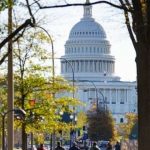
Unexpected Drop in Australian July Jobs as Labor Market Slackens
Australia’s employment decreased unexpectedly in July, ending two months of very strong growth, while the unemployment rate increased, indicating that the labor market may finally loosen.
The softer reading fueled speculation that the Reserve Bank of Australia (RBA) may be done raising interest rates, sending the Australian dollar to nine-month lows of $0.6366.
The Australian Bureau of Statistics (ABS) reported on Thursday that net employment fell by 14,600 in July from June, reversing some of June’s 31,600 increase and confounding market expectations of a 15,000 increase. All job losses were in full-time positions, which fell by 24,200.
The unemployment rate rose to 3.7% from 3.5%, exceeding analysts’ expectations of 3.6% and reaching its highest level since April.
The ABS issued a warning that the timing of the July school holidays was probably a factor in the figures, which might have artificially lowered them. However, the report appeared to support the RBA’s argument for a “turning point” in the market, which should reduce inflationary pressures.
The central bank has halted rate hikes for the past two months, and investors believe it may have completed its tightening cycle. Futures indicate a 50-50 chance of another quarter-point increase to 4.35% by the end of the year.
“Today’s data are likely to be the final nail in the coffin for any lingering expectations of a rate hike in September,” said Ben Udy, lead economist for Oxford Economics Australia.
“Even so, the deterioration in the labor market has a long way to run before the RBA can completely relax.”
The labor market has proven remarkably resilient, with 399,000 net job gains in the year to July, despite interest rates rising 400 basis points to a decade high of 4.1%.
In response to this strong demand for labor, wages have increased, though not to the same extent as in other developed nations. This week’s data revealed that annual wage growth slowed to 3.6% in the second quarter, well below the inflation rate of 6%, indicating that a price-wage spiral is not imminent.
Analysts Predict a Quarter Ahead for Wages, with Moderate Growth

Analysts anticipate that the current quarter will be stronger due to an increase in minimum wage awards, but that annual growth will likely peak at a relatively manageable 4%.
“It is getting harder to argue for a sustained lift in wage inflation momentum,” said Justin Smirk, a senior economist at Westpac. “We need to have an open mind to the idea there has been a significant change in wage/price-setting behavior and that wage inflation will peak at a lower rate than was initially anticipated.”
Read Next: Flat Opening Expected For Indian Shares Amid Global Equity Caution
Source: REUTERS














